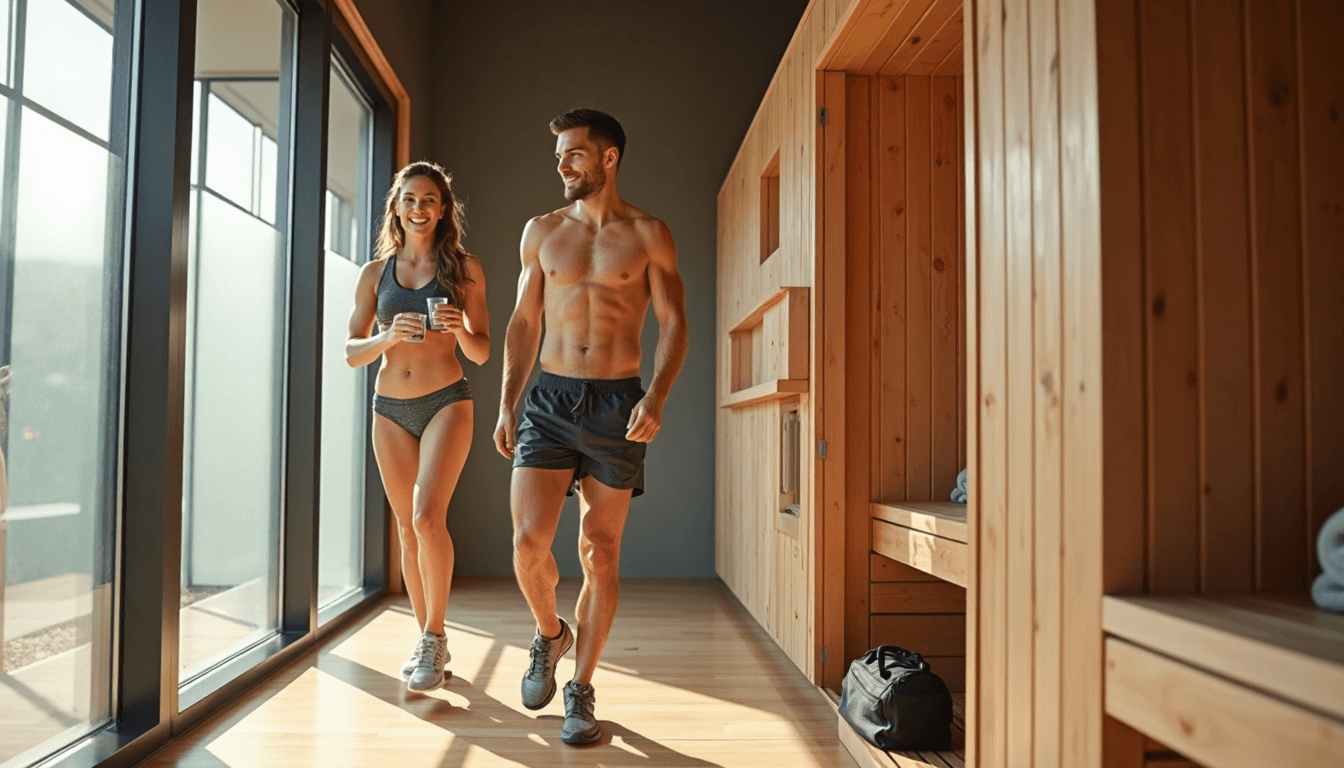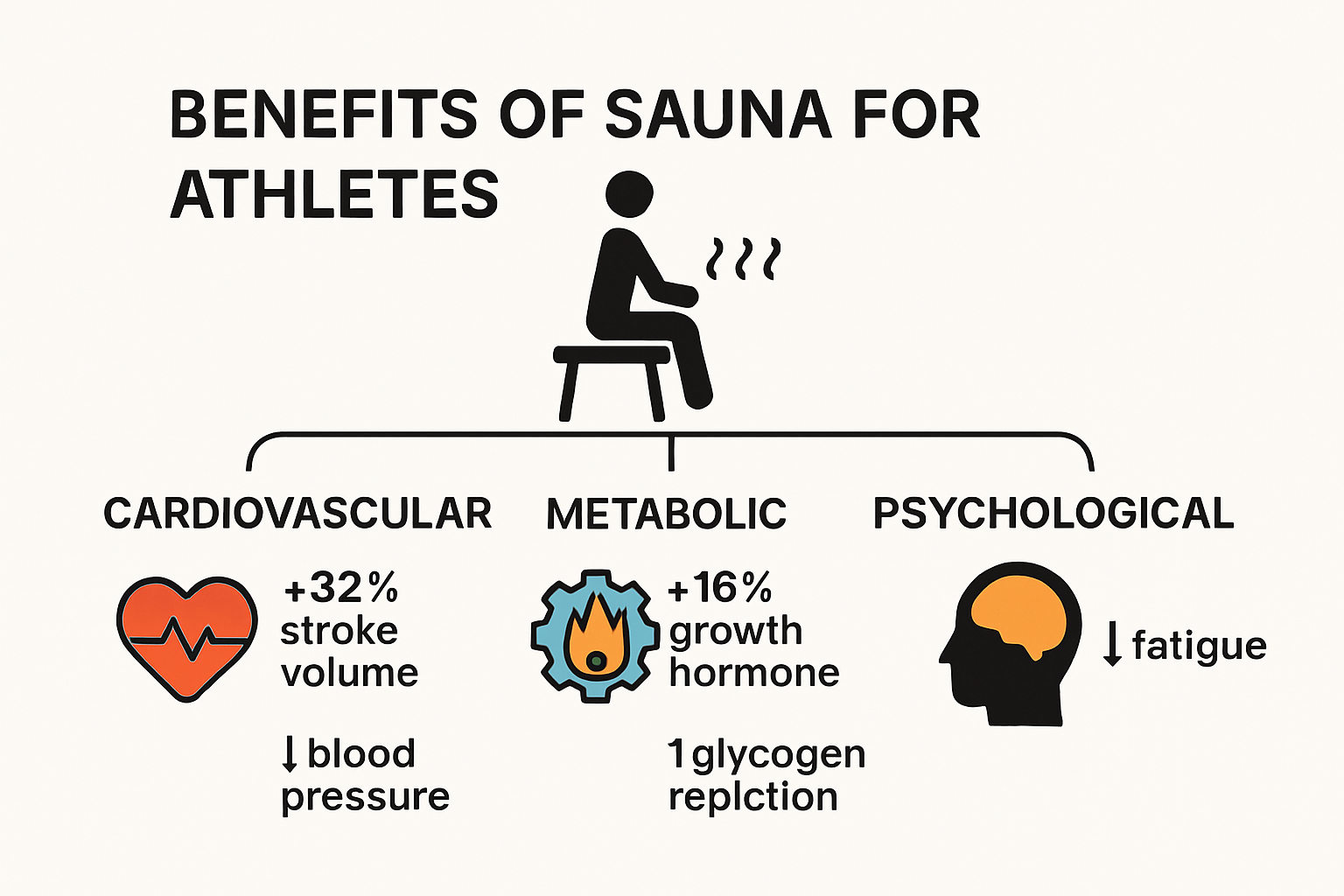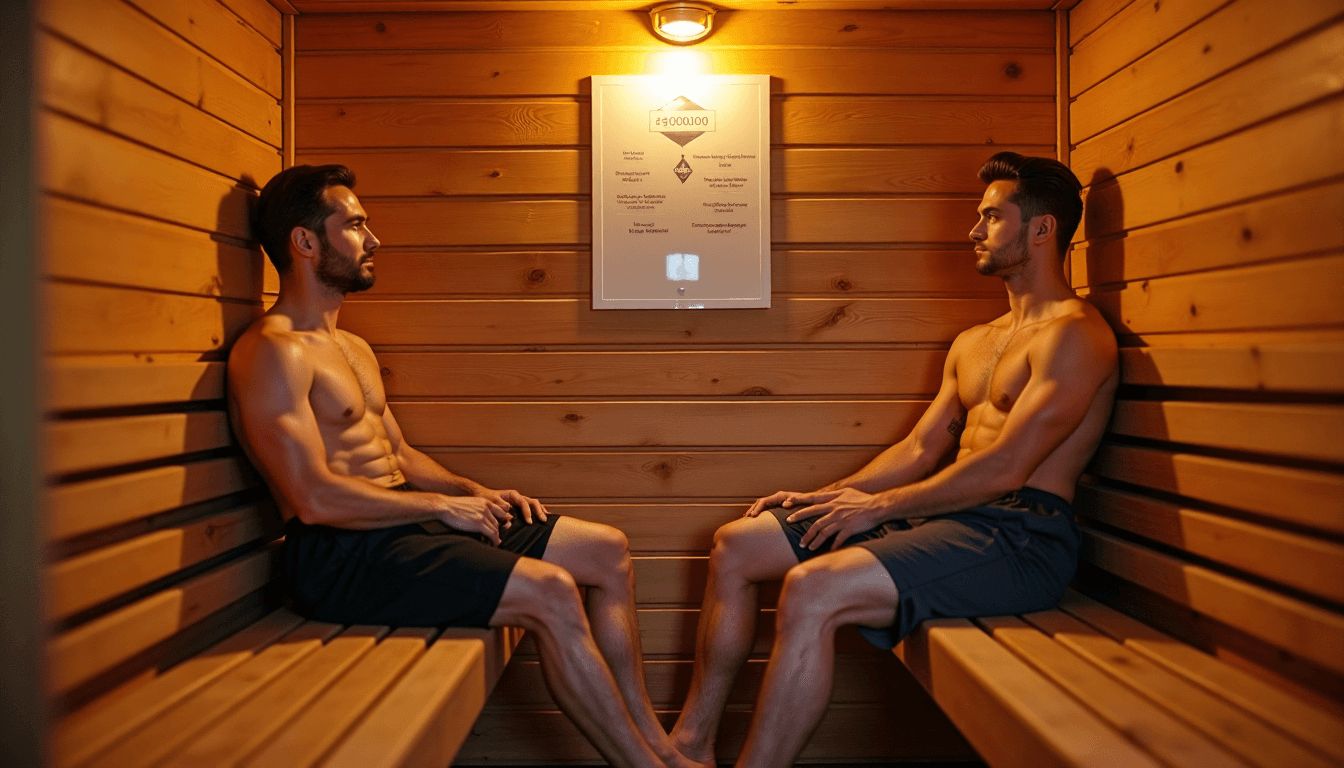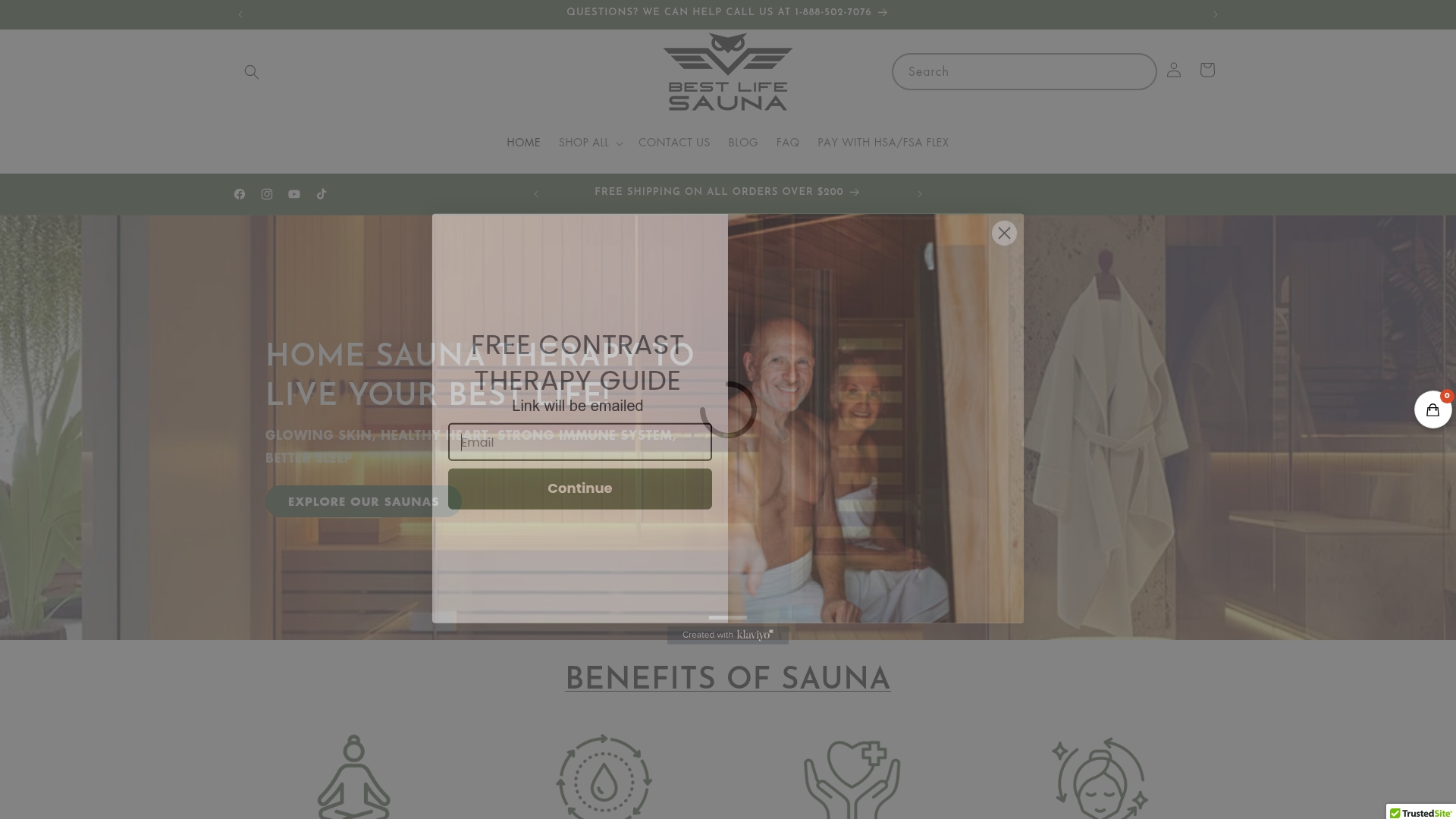
Sauna for Athletes: Boost Recovery and Wellness in 2025

Athletes everywhere are looking for the next edge that will help them recover faster and train harder. Here is something most people miss. A study found that just three weeks of sauna sessions after exercise increased time to exhaustion in runners by 32 percent. Most think of saunas as a luxury or a way to unwind. The surprising truth is they might be one of the most effective science-backed tools for boosting endurance and speeding up recovery in 2025.
Table of Contents
- How Saunas Benefit Athletic Performance
- Choosing The Best Sauna For Athletes At Home
- Effective Sauna Recovery Routines For Athletes
- Safety Tips And Best Practices For Sauna Use
Quick Summary
| Takeaway | Explanation |
|---|---|
| Enhanced Endurance | Sauna sessions can improve plasma and red-cell volume, leading to better oxygen delivery and endurance performance. |
| Optimal Session Timing | Athletes should utilize sauna sessions 30-60 minutes post-exercise for maximum recovery benefits and limit sessions to 15-30 minutes. |
| Hydration is Essential | Proper hydration before, during, and after sauna use is crucial to prevent heat-related illnesses and support performance. |
| Temperature Considerations | Opt for saunas with adjustable temperatures between 40-85°C to prevent excessive thermal stress and enhance recovery. |
| Personalized Protocols | Individual responses to sauna usage can vary, so athletes should monitor their own recovery markers and adjust protocols accordingly. |
How Saunas Benefit Athletic Performance
Athletes continuously seek innovative methods to enhance performance and recovery. Sauna therapy emerges as a powerful tool that goes far beyond simple relaxation, offering significant physiological benefits that can transform athletic training and recuperation strategies.

Cardiovascular Adaptation and Endurance Enhancement
Sauna sessions provide remarkable cardiovascular benefits for athletes. Research involving competitive male runners demonstrated extraordinary performance improvements. The study revealed that three weeks of post-exercise sauna bathing increased athletes’ time to exhaustion by an impressive 32%. This substantial enhancement resulted from critical physiological adaptations, including a 7.1% increase in plasma volume and a 3.5% increase in red-cell volume.
These physiological changes translate directly into improved athletic performance. The expanded plasma volume allows for more efficient oxygen and nutrient delivery to muscles, while increased red-cell volume enhances overall oxygen-carrying capacity. Athletes experience enhanced cardiovascular efficiency, which means greater endurance and potentially reduced fatigue during intense training or competition.
Performance and Recovery Optimization
Scientific research indicates that regular sauna use triggers remarkable adaptations in the body’s thermoregulatory mechanisms. These adaptations are particularly beneficial for endurance athletes who frequently compete in challenging environmental conditions. By exposing the body to controlled heat stress, athletes can develop improved cardiovascular resilience and thermal regulation.
A compelling eight-week study further substantiated the performance benefits of sauna training. Athletes who incorporated 15-minute sauna sessions three times weekly after exercise experienced significant improvements across multiple health markers. The results showed enhanced cardiorespiratory fitness, reduced systolic blood pressure, and improved total cholesterol levels compared to exercise-only groups.
Neurological and Hormonal Benefits
Beyond physical adaptations, sauna sessions trigger complex neurological and hormonal responses that support athletic performance. The controlled heat exposure stimulates the release of heat shock proteins, which play a crucial role in cellular repair and protection. Additionally, sauna use can boost growth hormone production, supporting muscle recovery and potential strength gains.
The thermal stress experienced during sauna sessions also activates the body’s natural stress response mechanisms. This controlled stress exposure helps athletes develop mental resilience and improves their ability to manage physiological challenges. Regular sauna use can effectively train the body to become more adaptable and responsive under various environmental and physical stressors.
Athletes considering sauna integration should approach it systematically. Start with shorter sessions and gradually increase duration, always staying hydrated and listening to your body. While the benefits are significant, individual responses can vary, making personalized approach crucial for optimal results.
Sauna for athletes represents more than a recovery technique. It is a comprehensive performance enhancement strategy that addresses cardiovascular, metabolic, and psychological aspects of athletic development.
Choosing the Best Sauna for Athletes at Home
Selecting the right sauna for athletic performance and recovery requires careful consideration of specific features and performance characteristics. Athletes must evaluate multiple factors to ensure their home sauna investment maximizes potential physiological benefits and training outcomes.
Infrared vs Traditional Sauna Technologies
Research from sports medicine experts indicates that far-infrared sauna (FIRS) technologies offer unique advantages for athletes. Operating at temperatures between 40-60°C, these saunas provide a more comfortable heat exposure compared to traditional high-temperature options. The moderate heat range allows for more extended sessions, enabling deeper physiological adaptations without excessive thermal stress.
Far-infrared saunas penetrate body tissues more effectively, promoting deeper cellular recovery. This technology has demonstrated significant improvements in neuromuscular recovery following both strength and endurance training sessions. Athletes can experience enhanced muscle relaxation, reduced inflammation, and accelerated metabolic recovery through targeted infrared wavelengths.
To help athletes choose between sauna technologies, the following table summarizes the key differences and benefits mentioned in this section:
| Sauna Type | Temperature Range | Key Benefits | Recommended For |
|---|---|---|---|
| Traditional Dry | 70-85°C | High heat, rapid sweating, relaxation | Short sessions, detox, relaxation |
| Infrared (FIRS) | 40-60°C | Deeper tissue penetration, improved recovery, longer sessions | Neuromuscular recovery, endurance |
Performance and Recovery Considerations
Clinical studies reveal that consistent dry sauna bathing increases plasma volume, a critical factor in cardiovascular performance. When selecting a home sauna, athletes should prioritize models that support consistent, controlled heat exposure. Key features to consider include:
- Temperature Range: Adjustable settings between 40-85°C
- Session Duration: Capacity for 15-30 minute sessions
- Material Quality: Non-toxic, heat-resistant construction
- Size: Sufficient space for comfortable movement
However, athletes must exercise caution. Research warns that post-exercise sauna sessions at 80-85°C might potentially impair subsequent athletic performance and increase stress levels. This underscores the importance of strategic timing and careful integration into training protocols.
Below is a summary table to help athletes review key features to consider when selecting a home sauna, based on information in this section:
| Feature | Recommendation | Purpose/Benefit |
|---|---|---|
| Temperature Range | 40-85°C adjustable | Prevents excessive thermal stress |
| Session Duration | 15-30 minutes | Enables optimal recovery adaptation |
| Material Quality | Non-toxic, heat-resistant | Safety and durability |
| Sauna Size | Enough space for comfortable movement | Usability and comfort |
| EMF Emissions | Prefer low-EMF IR models | Minimize potential health concerns |
Technical Specifications and Home Integration
Beyond performance metrics, athletes should evaluate practical home installation requirements. Electrical compatibility, room dimensions, and ventilation represent crucial factors. Portable infrared units offer flexibility for athletes with limited space, while built-in sauna rooms provide a more immersive experience.
Consider electromagnetic field (EMF) emissions when selecting infrared models. Low-EMF technologies minimize potential health concerns while delivering optimal therapeutic heat. Energy efficiency, ease of maintenance, and warranty coverage should also factor into the decision-making process.
Technology advancements now allow for smart sauna systems with programmable settings, allowing athletes to customize sessions based on specific recovery or performance goals. Some advanced models integrate mobile app controls, enabling precise temperature and duration management.
Ultimately, choosing a home sauna represents a personalized investment in athletic wellness. Thorough research, consultation with sports medicine professionals, and understanding individual physiological responses will guide athletes toward the most suitable sauna technology for their unique training needs.
Effective Sauna Recovery Routines for Athletes
Athletes seeking optimal recovery strategies have increasingly turned to sauna protocols as a powerful tool for physiological restoration and performance enhancement. Research reveals that 96.7% of elite endurance athletes incorporate sauna bathing into their recovery routines, underscoring its critical importance in modern athletic training.
Strategic Session Timing and Duration

Research from the University of South Australia highlights the importance of precise sauna session timing. Athletes should consider implementing sauna sessions within 30-60 minutes post-exercise to maximize physiological benefits. Recommended session lengths typically range from 15-30 minutes, with temperatures between 40-60°C providing optimal recovery responses.
The timing of sauna use is as crucial as the session itself. Immediately after intense training, the body experiences heightened metabolic activity and inflammation. Strategic heat exposure during this window can accelerate muscle recovery, enhance blood circulation, and support cellular repair mechanisms.
Physiological Recovery Mechanisms
A comprehensive study published in Frontiers in Sports and Active Living demonstrated remarkable improvements in neuromuscular performance following a single post-exercise infrared sauna session. The research revealed significant reductions in muscle soreness and enhanced recovery markers, suggesting that controlled heat exposure triggers complex physiological responses.
Key recovery mechanisms activated during sauna sessions include:
- Increased Blood Circulation: Promotes faster nutrient delivery and waste removal
- Heat Shock Protein Activation: Supports cellular repair and stress resistance
- Hormonal Regulation: Stimulates growth hormone production and supports metabolic functions
Personalized Recovery Protocol Development
Developing an individualized sauna recovery routine requires careful consideration of personal fitness goals, training intensity, and physiological responses. Athletes should start with shorter, moderate-temperature sessions and gradually increase duration and heat exposure.
Hydration represents a critical component of effective sauna recovery. Athletes must replace electrolytes and fluids lost during heat exposure. Recommended hydration strategies include consuming electrolyte-rich fluids before, during, and after sauna sessions.
Monitoring individual responses is essential. Some athletes may experience more significant benefits from infrared technologies, while others might respond better to traditional dry sauna environments. Tracking recovery markers such as muscle soreness, sleep quality, and subsequent training performance can help refine personal sauna protocols.
Professional athletes and coaches increasingly recognize sauna recovery as a sophisticated training technique. By understanding the nuanced physiological responses and implementing strategically designed protocols, athletes can unlock enhanced recovery potential and potentially improve overall performance capabilities.
Safety Tips and Best Practices for Sauna Use
Sauna use represents a powerful recovery tool for athletes, but implementing proper safety protocols is crucial to maximize benefits and minimize potential health risks. Understanding and respecting physiological limitations ensures a safe and effective sauna experience.
Hydration and Physiological Preparation
The Centers for Disease Control and Prevention emphasizes the critical importance of hydration for athletes using heat therapy. Proper fluid management is essential to prevent heat-related illnesses and maintain optimal performance. Athletes should develop a comprehensive hydration strategy that includes:
- Pre-Sauna Hydration: Drinking 16-20 ounces of water 1-2 hours before sauna session
- During-Session Fluid Intake: Small sips of water to maintain electrolyte balance
- Post-Sauna Rehydration: Consuming 20-24 ounces of water to replace lost fluids
Safety recommendations from expert sources suggest limiting sauna sessions to 15-20 minutes to prevent dehydration and potential overheating. Athletes with pre-existing health conditions should consult healthcare professionals before integrating sauna protocols into their recovery routine.
Timing and Physiological Considerations
Proper timing of sauna sessions is crucial for athlete safety and effectiveness. Research indicates that athletes should avoid entering the sauna immediately after intense exercise. Allowing the heart rate to normalize prevents unnecessary cardiovascular strain and reduces potential health risks.
Key timing recommendations include:
- Wait 10-15 minutes after intense exercise before entering the sauna
- Monitor heart rate and personal comfort levels
- Start with shorter sessions (5-10 minutes) and gradually increase duration
Medical Screening and Individual Precautions
Athletes must conduct thorough medical screenings before implementing regular sauna protocols. Certain medical conditions can significantly impact sauna tolerance and safety. Potential contraindications include:
- Cardiovascular disorders
- Uncontrolled hypertension
- Recent injuries or surgical procedures
- Pregnancy
- Certain neurological conditions
Listening to your body represents the most critical safety practice. Athletes should immediately exit the sauna if experiencing:
- Dizziness
- Nausea
- Excessive sweating
- Chest pain
- Difficulty breathing
Individual heat tolerance varies significantly. What works for one athlete may not be suitable for another. Developing a personalized approach requires patience, careful monitoring, and gradual adaptation.
Technology can support safe sauna use. Modern saunas often include built-in temperature controls, timers, and safety features that help athletes manage their sessions more effectively. Utilizing these technologies can provide an additional layer of safety and performance tracking.
Ultimately, sauna use is a nuanced recovery strategy that demands respect for individual physiological responses. By prioritizing safety, maintaining proper hydration, and listening to your body, athletes can unlock the significant performance and recovery benefits of strategic heat exposure.
Frequently Asked Questions
What are the benefits of sauna use for athletes?
Sauna sessions provide numerous benefits for athletes, including enhanced endurance, improved cardiovascular efficiency, and faster recovery. Regular use can increase plasma and red-cell volume, leading to better oxygen delivery to muscles and reduced fatigue during training.
How often should athletes use the sauna for recovery?
Athletes are recommended to incorporate sauna sessions 2-3 times per week, ideally 30-60 minutes after exercise. Each session should last between 15-30 minutes to maximize recovery benefits.
Is hydration important when using the sauna?
Yes, proper hydration is crucial when using the sauna. Athletes should drink water before, during, and after their sauna sessions to prevent dehydration and heat-related illnesses.
What type of sauna is best for home use by athletes?
For home use, infrared saunas are often recommended due to their lower operating temperatures (40-60°C) and deeper tissue penetration, which can enhance muscle recovery without excessive thermal stress. Traditional saunas can also be effective but may require caution regarding session duration and heat intensity.
Bring Real Athletic Recovery Home: Choosing the Right Sauna Makes the Difference
Athletes are constantly searching for ways to push limits and speed recovery. If you are struggling with muscle soreness, slow performance gains, or inconsistent recovery, the right sauna routine can be a game changer. The article covered how plasma volume, oxygen delivery, and heat shock proteins make a real impact for anyone looking to boost endurance and maximize wellness. But not every sauna delivers the same physiological results. Your home setup should actually support the science-backed edge you seek.

Are you ready to feel the performance and recovery benefits athletes need in 2025? Discover expertly designed infrared and traditional saunas, plus wellness accessories like cold plunge tubs and swim spas, all at Best Life Sauna. Shop now and see why athletes and wellness enthusiasts trust us for customer satisfaction, premium features, and special perks like free shipping on qualifying orders. Upgrade your home recovery space today. Visit Best Life Sauna and start feeling your best after every session.

